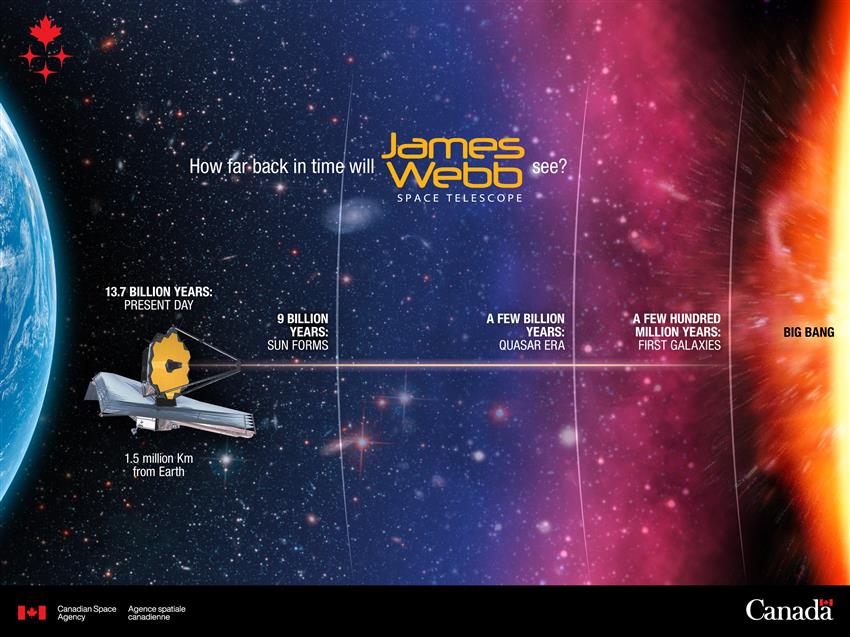Christmas Day James Webb Telescope Launch

"It's the most powerful and complex space observatory ever built.""It is a new step in astronomy, in understanding the universe, and our place in it.""And these scientific discoveries will be possible thanks to Canada's expertise in astronomy.""We often talk about Webb as Hubble's successor. Webb is much bigger, it will capture more distant objects with low luminosity, look further into the history of the universe."?We will be able to see phenomena at the origin of the creation of our universe, its history. We often wonder why we explore space, but it will tell us so much."Lisa Campbell, president, Canadian Space Agency"We are the eyes of the telescope; it's Canadian eyes that allow all observations.""Canada has never been involved at this level in this kind of project."Nathalie Ouellette, outreach scientist for the Webb, Universite de Montreal"We were looking at the launch video, and my husband was pointing out that he could see the logo for NASA, but also the Canadian Space Agency; right there on the rocket.""It's pretty awesome."Daryl Haggard, professor of physics, McGill University, James Webb Space Telescope co-investigator
 |
| Canada's Fine Guidance Sensor (FGS) and the Near-Infrared Imager and Slitless Spectrograph (NIRISS) at NASA's Goddard Space Flight Center. (Credit: NASA) |
Most people interested in astronomy and space ventures have heard of the Canadarm from the Canadian Space Agency, as a robotic arm that supported American space shuttle missions for some thirty years from 1981 forward. But there is more, much more that Canada has to offer in space exploration. On this mission Canada has contributed the Fine Guidance Sensor to help aim the telescope, and the Near-Infrared Imager and Slitless Spectrograph, to help analyze the light that is observed. Both designed and built in Canada.
 |
| Webb will be able to see back to when the first bright objects (stars and galaxies) were forming in the early universe. (Credits: STScI, CSA) |
Canada, explained Dr.Campbell, has been at work on the James Webb Space Telescope almost from its beginnings, and will now be among the first countries to study its discoveries. The telescope's mission is to search for unprecedented details on the first galaxies created following the beginning of all that exists; the Big Bang, and on development of potentially life-accommodating planets beyond our solar system.
Roughly half of the 600 scientists in the Canadian Astronomical Society were involved with the telescope, while dozens of engineers have been involved in being part of the telescope's design team. The telescope with the $10 billion price tag began its hurtle toward its destination some 1.6 million kilometres distant (over four times beyond the moon) on Christmas Day. "To see the telescope leave Earth -- what a joy for Christmas", said Dr.Ouellette.
It will be a month that will elapse before the telescope approaches near its destination. And it will take an additional five months for its infrared eyes to prepare themselves to begin scanning the cosmos. For Daryl Haggard, professor of physics at Montreal's McGill University, co-investigator of the James Webb Space Telescope, the project is a special, personal point of pride. She anticipates the project will place Canada on the map for astronomical expertise.
Once anticipated data begins arriving in roughly six months' time, Canada is guaranteed at least five percent of observation time on the telescope, in acknowledgement of its contribution with the telescope. This will give Canadian scientists the opportunity to advance their studies on exoplanets and black holes among other arcane and tantalizing space issues in solving the mystery of existence.
 |
| Canada's stellar navigator on the James Webb Space Telescope (Credit: Canadian Space Agency) |
Labels: 1.6 Million Kilometre Destination, Astronomers, Canada, James Webb Telescope, NASA

<< Home